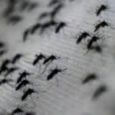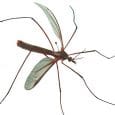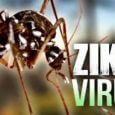est Nile Virus Infections Can Be Estimated by Observing Rainfall and Temperatures June 30, 2016 by Entomology Today 1 Comment
A northern house mosquito (Culex pipiens), the primary vector of West Nile virus in the United States. Photo by Ary Farajollahi, Bugwood.org.
By Alan Bolds
A study by researchers at the University of Illinois Urbana-Champaign (UIUC) found that mosquito infection rates (MIR) for West Nile virus can be estimated with statistical models based on rainfall and temperature. The study, “Predicting West Nile Virus Infection Risk From the Synergistic Effects of Rainfall and Temperature,” was published in the Journal of Medical Entomology.

Alan Bolds
The study is based on research conducted in DuPage County, Illinois, which has a population of 932,000. In DuPage County, mosquito control is organized through municipalities, townships, mosquito abatement districts, and several large landholders. Human cases of West Nile virus in DuPage County have been reported each year since 2002, with the highest number of cases (49) and four deaths occurring in 2012.
In 2013, DuPage County commissioned a task force to recommend an integrated mosquito management approach across multiple jurisdictions that provide mosquito control. One outcome of the task force was the formation of a partnership in 2014 between UIUC, the county health department, the Forest Preserve District, and the Wheaton Mosquito Abatement District. The purpose of the partnership was to create an early-warning system to predict the mosquito infection rate (MIR) applicable to the entire County. This would benefit each jurisdiction, especially those lacking resources and expertise to assess WNV risk.
The research team, led by Dr. Marilyn O’Hara Ruiz, used historical mosquito infection data for DuPage County to compare historic mosquito tests with weather, and develop a mosquito infection prediction model to provide a warning of human exposure risk. The foundation of the DuPage Model was based on earlier research by Dr. Ruiz and colleagues.
Dr. Ruiz spoke about the potential impact of the DuPage Model by saying, “Public health personnel response to mosquito-borne diseases is limited when they lack information about the level of the threat of human illness before cases are reported. Considering West Nile virus in North America, the risk of human illness varies between and within mosquito seasons and by geographic region, complicating the operational readiness to develop a realistic estimate of the current situation. Mosquito infection rate (MIR) is one good indicator of the risk of human illness.”
By the end of summer 2014 the research team and its partners had successfully tested “The DuPage Model,” and by the following summer, the model was implemented by the health department. In addition to the DuPage Model, the health department offers a Personal Protection Index on its website.
The success of the DuPage Model encouraged the research team to begin work with Dr. Nancy Westcott of the Midwestern Regional Climate Center (MRCC) at UIUC to expand the DuPage Model to a statewide prediction model for Illinois, thus making the same forecasting tool available to 102 counties in the state, with the counties combined into nine climate divisions. The Illinois WNV Mosquito Infection Rate Prediction Model was launched in June 2016, and the MRCC is hosting The DuPage Model.
The DuPage Model is based on an equation with 17 different terms related to weather conditions. It estimates the West Nile virus MIR week by week, with very warm temperatures and light precipitation most conducive to high MIR values, especially when preceded by a warm winter.
In a report prepared for the partners of the DuPage Model, Dr. Ruiz and her team outlined the benefits of a weather-based mosquito infection model for improved WNV risk assessment. These benefits are:
- It provides estimate of mosquito infection about two weeks earlier than from mosquito test results.
- Weather data are more reliable than mosquito infection data and less expensive to obtain.
- The estimates of mosquito infection that are based on weather can supplement ongoing mosquito testing.
The development of the DuPage Model adds to our knowledge of WNV infection and weather. The same type of model could be applied in other locations in the United States where local governments provide mosquito control and risk assessment for WNV. The DuPage Model also might be extended to other mosquito-borne illnesses in the future.
Alan Bolds is president of the Wheaton Mosquito Abatement District which serves portions of five municipalities, three townships, and property held by three units of local government in DuPage County. He is employed by the Alzheimer’s Association.



